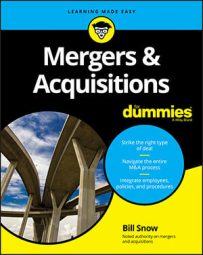The offering document for an M&A deal is the deal book, the almanac of fact, the atlas of numbers. The offering document is the bible of the company. As with any written document, it becomes dogma. In other words . . . it’s kind of important. Take care to draft a complete, honest, and accurate offering document.
The Seller writes the offering document (or, as is often more accurate, the Seller’s advisors do). Writing an offering document is a time-consuming process, so Sellers need to make sure the book-writing takes priority in their daily activities.
If advisors are handling the task, an employee (usually the CFO or some other high-ranking finance person) makes sure to provide the author(s) with all the necessary information. From the time all the necessary information is gathered, a well-written offering document should take 60 days to write.
Buyers don’t need to write an offering document. However, unless the company is well known and/or has a very detailed website, Buyer may want to prepare a quick one- or two-page overview of his company and investment thesis (a description of the types of companies he wants to acquire as well as his rationale for why those acquisitions make sense).
A well-written offering document spells out the value proposition for the Buyer. It includes an in-depth review of the company’s operations, finances, sales, marketing, customers, employees, facilities, and more. This collective information should be sufficient for an interested Buyer to make an offer for the company.
Think of an offering document as a road map to value. Sure, Seller’s intent is to maximize the price Buyer pays for the company, but Buyer is only going to pay a price that makes sense from his view. Seller has to show Buyer where Buyer can realize value. And of course, Buyer has to confirm that value proposition!
Don’t include an asking price in the offering document. You want the other side to make the first move. If you as a Seller provide an asking price, you’ve merely set the maximum price. Buyers probably won’t be willing to pay more.
Worse, if you give one price to Buyer A and Buyer B ends up paying more, Buyer A will rightfully be upset because Seller provided information that turned out to be moot.
Despite the fact that Buyers do far less work regarding the offering document few Buyers do actually go through it. Some Buyers do actually read it closely, but many others merely scan the document and have a junior team member do the actual reading and provide a synopsis, quite often verbally during a meeting.
So why write a document most people don’t read?
First, writing an offering document often becomes an introspective journey for a Seller. The exercise reveals details about his company, the operations, what works, what can be done better, and what should not be tried again. In creating a roadmap of value for a Buyer, the Seller is able to understand his company, market, and industry.
In fact, during many sales processes, the Seller almost always remarks that although the exercise of compiling the book was a pain, it was ultimately worthwhile because he learned about his company.
Second, even though Buyers often don’t spend much time with the book prior to management meetings, they refer to it constantly as they craft offers. The offering document becomes a reference guide for the Buyer. The Buyer flips back and forth searching for specific bits of information as he contemplates what offer makes sense.

